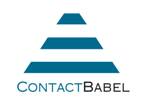
Customer satisfaction drops as customer service agents more frequently use apologetic or polite vocabulary in a conversation, while customers benefit by being polite themselves, according to findings of the quarterly Zendesk Benchmark report released today. The special section of the second quarter 2014 report highlights metrics on behavioural cues in interactions between an agent and customer to better understand customer satisfaction beyond customary metrics. Overall, Global satisfaction increased by 2 points reaching 83 percent customer satisfaction.
“Our research shows that word choice and word frequency have a direct correlation with customer satisfaction,” said Sam Boonin, vice president of products at Zendesk and research lead on the Zendesk Benchmark report. “We’ve found there are triggers around the word ‘sorry’, and when used more than twice there is a problem brewing. This can be a helpful indicator for companies to know when to escalate a ticket, avoiding an unhappy customer.”
The Zendesk Benchmark report took a closer look at behavioural cues of customers and agents to better understand how these correlate with increased or decreased customer satisfaction. The report evaluated the effect of “sorry,” “please,” and “thank you” in public comments by agents on customer satisfaction. In all three cases, customer satisfaction decreases with increased use of these words. With increasing usage of “sorry,” satisfaction drops at a much faster rate versus using the expressions “thank you” or “please.” The increased usage may indicate interactions with those words require multiple back and forth steps, as well as longer resolution times.
Other Key Findings
• Valediction: Interactions with the sign off “Best Wishes,” in comparison to “Best Regards,” “Cheers” and “Yours Sincerely,” have a 11-14 percent lower customer satisfaction score.
• Word Count: A wordier request for help in an online form leads to lower customer satisfaction, but in email customers can be long-winded with little effect on their satisfaction. In a web form, customer requests with 150 to 200 words in the initial description end up with 10 percent lower satisfaction scores than those where the initial description is only 1 to 50 words. There is no significant difference between satisfaction and those word counts with email.
• Email Address: Users of Yahoo email provide the lowest customer satisfaction scores at 75.4%, significantly lower than .Mac users at 84.6%.
Customer Satisfaction by Country: Italy and Columbia Make List for the First Time, UK is 16th overall for customer satisfaction at 82.8%
For the first time, Italy and Columbia made the list, coming in at No. 4 and No. 30, respectively. New Zealand is steady in the No. 1 spot for the third consecutive quarter, with 93 percent customer satisfaction. Canada and Norway are tied at No. 2 for the second quarter in a row with 92 percent satisfaction. The U.K. is No. 16, with an increase of 2 percentage points to 85 percent.
TOP COUNTRIES Q2 (2014) SINCE Q1 (2014)*
- New Zealand 93%
- Canada 92%
- Norway 92%
BOTTOM COUNTRIES Q2 (2014) SINCE Q1 (2014)*
- India 58%
- Turkey 68%
- Colombia 71%
Customer Satisfaction by Industry: Social Media Gains
The 2-point rebound in overall customer satisfaction comes as industries with historically poor ratings, including social media and retail, saw recent gains. While still among the most poorly performing industries, social media is no longer in last place and demonstrated the most improvement across all industries in the second quarter, gaining 9 percentage points to reach 78 percent. IT services and consultancy leads in industry rank unchanged at 94 percent customer satisfaction, while education has gained a percentage point. For the first time in three consecutive quarters, government and non-profit has dropped lower than No. 2 in the top industry category.
TOP INDUSTRIES Q2 (2014) SINCE Q1 (2014)*
- IT Services & Consultancy 94%
- Education 93%
- Government & Non-profit 93%
Bottom Industries Q2 (2014) Since Q1 (2014)*
Entertainment & Gaming 75% 1
- Social Media 78% 9
- Travel, Hospitality & Tourism 82% 2
- About the Zendesk Benchmark
The Zendesk Benchmark is based on actual customer service and support interactions between 25,000 participating organizations and their customers across 140 countries. Introduced in March 2012, it allows organizations to compare their customer service performance against industry peers. It measures key metrics around customer support efficiency, customer self-service behaviour, and levels of customer engagement. Customer satisfaction is based on the percentage of positive responses to the question of whether or not a customer was satisfied with a customer service interaction. For a country to be included in the quarterly report, it must have a minimum of 10,000 responses during the quarter.



